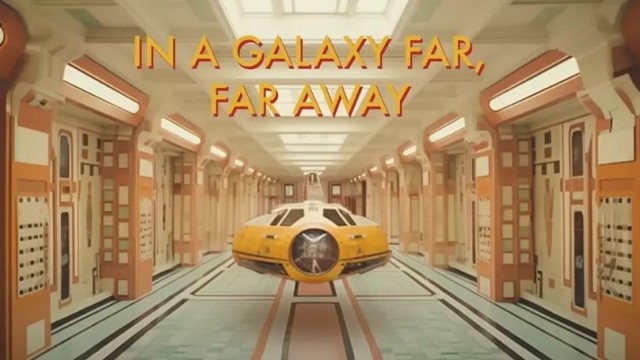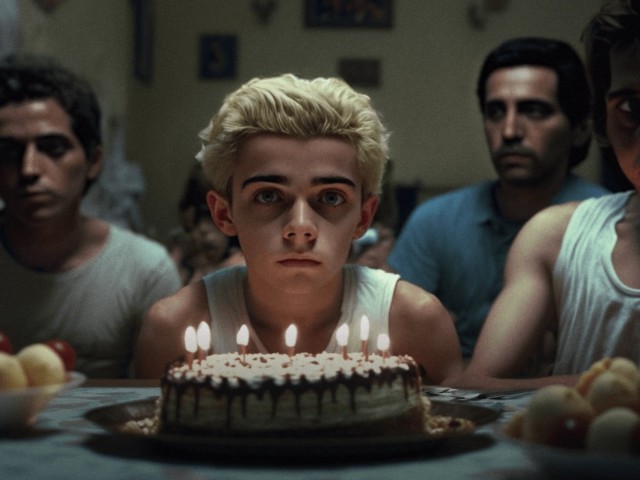There is intense hype around A.I. and I won’t argue that it is unwarranted. The potential of the technology for reordering the creative process (and the economic paradigm that supports it) is undeniable at this point.
We play our part in contributing to the hype too. We’ve worked to familiarize ourselves and you on the current state of play in pieces like “Is AI the Future of Filmmaking“, or via this collection of AI-assisted short films we’ve started on our sister site, Shortverse, and indeed, everywhere I go online I am encountering curated threads, Reddit lists, and collections of TikToks that showcase the latest experiments from early adopters. Most pieces that are breaking through feel a bit hacky, though. The Guardian recently beseeched creators to “stop using AI to make Wes Anderson parodies“, a trend that was amusing, but also ironically showcased that which AI is not able to generate at this moment—originality, or an engagement with images that possesses thematic intentionality.

Star Wars by West Anderson Trailer is fun, but there is more to Wes than centered images and pastels.
What will AI-first art look like? Amidst the memes and the jokey homages, film and video works that articulate a distinct creative vision are underway, ones that move past the novelty of the process to enable new modes of expression. We’re still so easily impressed by the “how” of AI-assisted work that we’ve yet to fully engage the “what”, but that time is coming.
Despite this rambling intro, I do think how we judge AI works will, ultimately, be pretty similar to how we’ve always judged art! Does it move you? Does it make you think? Do you appreciate the aesthetics? By these criteria, /Imagine, by French actress and filmmaker Anna Apter is an unqualified success. A mere 2min long, the film’s imagery is generated almost entirely by Midjourney, yet the quality of its script and art direction, plus the way it reflexively ties the means of its creation into its larger thematic points is very impressive.
“No kids were harmed in the making of this film because they do not exist”
At its heart, /Imagine is a fairly familiar critique of the deleterious effects of social media on youth. In execution, it is anything but familiar. We begin with a blinking cursor. The film is a voice-over, possibly of “Anna” herself, supplying a text prompt to an AI generator. “Imagine…” she begins, and then starts to describe a 13-year-old on the cusp of joining social media. The voiceover is lengthy and moves through several digressions while images of teens alone, staring into the middle distance, in front of a birthday cake, flash. The kids have a haunted look to them and while the words could be interpreted as a well-meaning warning from a wise elder, the quality of the voice-over, which quickens in pace and spills out in a rush, betrays an anxiety that makes clear that the uneasiness belongs as much to the narrator as to this emergent generation.
Apter cheekily applies a disclaimer to the film: “No kids were harmed in the making of this film because they do not exist”, and the fact of this non-existence has two important effects on the film. First, and most apparent, is that Apter has complete control over the depiction of the teens, their look, and the spaces they inhabit. For the purpose of this film, AI is not the quicker, cheaper replacement for live-action, it is actually a qualitative improvement, due to the consistency of the art direction achievable and the control she has over the look of the digitally generated kids. Apter is able to create a haunting initiation for them that is deeply unsettling visually, as she subtly plays up the haunted look of the characters in combination with the slightly uncanny quality of their artificiality, which combines to put the viewer on edge.

The sunken eyes and haunted expressions of the kids are easier to accentuate via generation.
Secondly though is how the non-existence of the kids plays into Apter’s larger point about the inherent artificiality of social media. The kids aren’t real but neither are the interactions, events, or even people you engage with on these platforms. It isn’t the most original observation, but this combination of content and method embeds the theme at a deep primary level within the piece.
“I wanted to imagine what it was like growing up in a world where reality and virtuality are constantly merging. We fear that AI will make it impossible to distinguish truth from falsehood, but the boundary has already been blurred by social media for years,” Apter shares with us, and given the current climate, is only natural that a piece so reliant on technology still reflects a degree of digital pessimism.
Apter is not a doomer when it comes to AI though, stressing that, despite this film being made with no help and no money, she does not see it as a replacement for the larger teams she often works with. “I think we need to learn how to control the machine to prevent it from replacing us,” she tells us, adding, “Preventing humans from using new technology is stifling creativity. Artificial intelligence is here. Now, it’s up to us to decide what to do with it.”
Similarly, It is important to note as well that, AI generation ≠ easy. Apter stresses that she uses AI “as an executor, not as a decision-maker”. She approached the project similarly to any other, describing for Numerama that she “…thought as I would with a storyboard. I described to Midjourney the precise images that I would have drawn in a storyboard and given to a team if I had one.” Each image was generated via highly detailed prompts that described the physical attributes of the characters, their emotions, and the camera blocking and focal quality, as well aspects such as the region of the world, time of day, and lighting.
A couple of months old at this point, the animation of /Imagine is very subtle, betraying that it is largely derived from Midjourney which specializes in still images. We are now entering a world of text-to-video, as seen with the recently released work, Thank You For Not Answering, but this film doesn’t miss the fluidity of motion. Already, the speed of the narration makes it difficult to keep up with the text and appreciate the images at the same time (on my rewatches I’ve been using YouTube’s .75x playback speed) and text-to-video has yet to fully solve for the flickering of its model, and the consistency of the art direction here is one of the standout elements. This has been recognized elsewhere, with the film taking home Best Director and the Critic’s Choice awards from the 13th Nikon Film Festival recently. We’re honored to include it in our collection of Short of the Week Official Selections, and eagerly await more from Apter, though her foray into AI creation may be just a dalliance, as she’s currently writing a half-hour tv series and a feature film.

 Jason Sondhi
Jason Sondhi